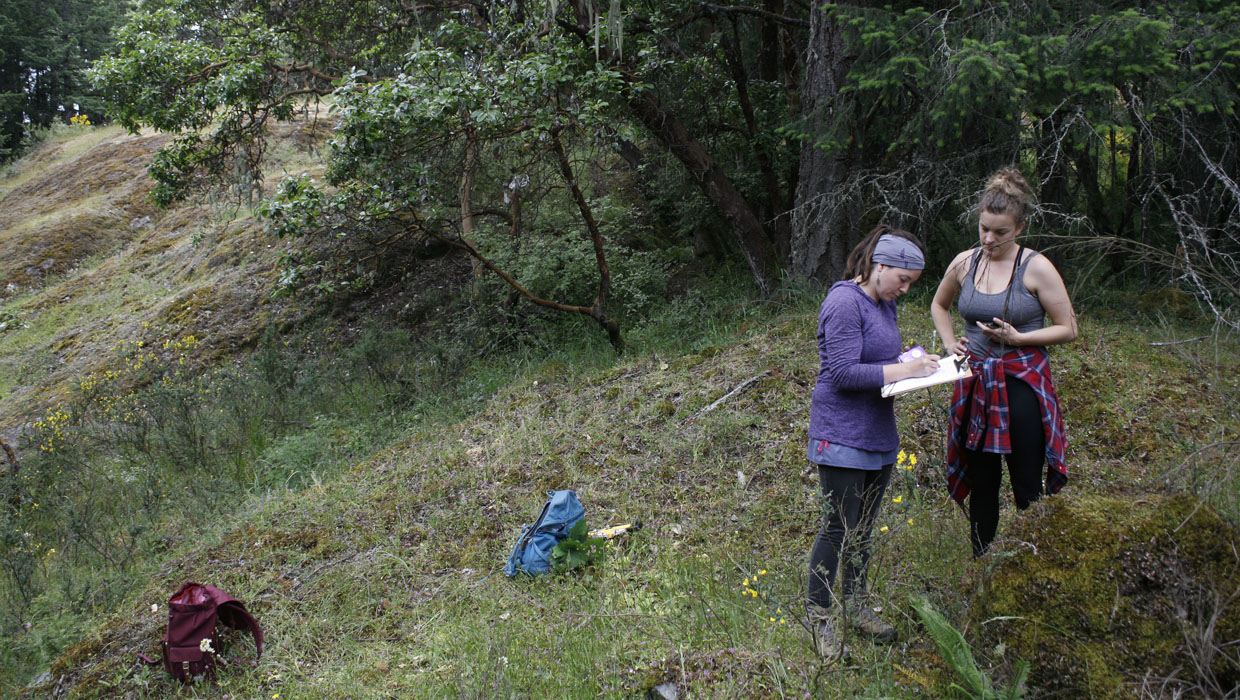On June 7th TLC staff member Torrey, summer intern Karen and volunteer Kayla began their monitoring day by entering the Hannington swamp located in the Highlands. It was a wet winter this year so the swamp was still very much full of water. This is great for aquatic flora and fauna but for the three monitors it became a challenge to stay dry! They determined the depth was about one meter at this time, but come the end of summer the swamp will be almost entirely dry. Finally arriving on the dry south side of the swamp, the three amigos got to work: completing repeat photography and plant inventories.
Along the route they found many wonderful wildlife trees with excavations for nesting woodpeckers and sapsuckers. TLC recorded these wildlife tree locations using GPS waypoint markers to keep on file, as well as recording the decay class, height of the tree using good old trigonometry (see, your math teacher WAS right!) and a clinometer, how much bark was left on the tree and number and size of excavations along with the tree species.
The route continued up, up and away from the swamp and with elevation change the flora also changed. The group found themselves atop a mossy rock outcrop where meadow death-camas (Zygadenus venenosus) was in full bloom! These beautiful plants are related to the culturally important great camas (Camassia leichtlinii) and common camas (Camassia quamash). Meadow death-camas, as the name suggests, is poisonous so be sure not to confuse them with the edible bulbs of great and common camas! Upon further observation, Karen found Wallace’s selaginella (a clubmoss rather than a true moss) and reindeer lichen. These two plants make up a plant community which is becoming increasingly rare on Vancouver Island so it was a delight to see them protected within the covenant.
Other species seen along the way included a fallen log infested with grey-brown sap rot, evident by the fruiting bodies on the log which resemble little white macaroons and smell like basil when cracked open. The sap rot develops rapidly in dead standing timber but the fruiting bodies are annual and quite superficial, limited to the outer one to two centimeters of the tree, and only occurring after one year past the tree’s death. Red columbine (Aquilegia formosa), a beautiful wildflower that attracts hummingbirds and butterflies, was also spotted. The Quileute, a coastal First Nation, would scrape the roots of columbine with a rock and smear the milky pulp on sores to help form a scar, with the leaves also chewed and spat on sores to aid healing. Amazing what can be found in the woods!
The group travelled back down the mountain via a moist gully, bushwhacking though neck high sword ferns before finishing the loop at the swamp. What a day!

















